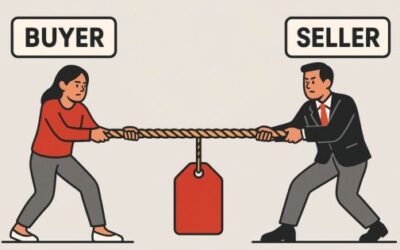The current economic climate has a created a unique set of challenges for businesses and their sales teams. In a recession, cash flow is king. Companies are looking for ways to optimize their operations and reduce costs. This presents a significant opportunity for sales teams. Selling in a recession requires you to recognize these opportunities and capitalize on them.
Working in sales during a recession is a challenge. Learning how to increase sales during recessions is an even larger challenge. But, it’s possible. The first thing you need to understand is that highlighting business problems and the solution you can provide to solve these business problems is going to win the sale. Business problems refer to issues that impact the bottom line and overall success of an organization. Things like declining sales, increased losses to competitors, or lack of growth. Technical problems, on the other hand, are issues with a system a company uses to run it’s operations, i.e. software or hardware issues.
To successfully sell in a recession you need to understand that technical problems are the thorn in your side, they’re annoying but they aren’t necessarily restricting the business from succeeding. The key for Gap Sellers is to make the connection between the technical problems and their impacts that lead to business problems. Business problems win sales. In a recession, highlighting a business problem is just one aspect of being successful:
Understand Your Buyer’s World
As mentioned previously, the key to selling in a recession is to understand your buyer’s world, problems, and needs. By studying your ICP (Ideal Customer Profile), you can gain insight into the problems plaguing your buyers that are exacerbated by an economic downturn. You should have a list of problems you can solve for your buyers, but this list also includes problems they may not be aware of. These could be critical problems that need to be solved in order to both survive and thrive in a recession.
This is a large ask and it’s not an easy task to accomplish. But, if you understand the environment and you do a proper discovery there is a good chance you will start to see patterns and highlight common occurrences.
Target Unique, Recession based Problems
Once you have identified these problems, it’s important to position yourself as a valuable asset for your buyer by highlighting how the lack of action in a particular area is far more expensive than if they take action. This is where problem-centric selling comes into play. By understanding your buyer’s business, market, and the problems you solve for your customers, you should be able to position yourself in a way that tells your prospects and customers what they should be worried about and why.
You should be able to explain to these prospects how these problems might play out. You should be able to stop the conversation and say ‘hey, we’ve seen this problem evolve and cause this. You might be at risk of these impacts if you don’t fix this problem.’ You’re job is to help buyers find money they wouldn’t normally have.
For example, let’s say you sell maintenance services for oil and gas companies. Your company helps them keep their equipment running and prevents it from going down unexpectedly. In a regular economy, unplanned downtime can be costly, but in a down economy, it can be devastating. With oil and gas prices down, companies that produce oil and gas operate on tiny margins, and any unplanned downtime can quickly put them in the red, eroding their cash position.
If your company can demonstrate that you can reduce unplanned and planned downtime during a recession, you will get their attention. The cost of paying you is far lower than experiencing a plant shutdown, even for just a few hours.
Position Yourself Properly
To sell in a recession, it’s not enough to just target a unique problem, but also take a position. Leveraging the research you’ve done, you need to challenge your prospects and push them to see things differently. Imagine engaging a prospect like this, “Mr. Customer, our research has shown that the average plant struggles with maintenance and has at least 8-12 hours of unplanned downtime per quarter. This can equate to a loss of oil and gas production of $3 – $9 million dollars per quarter, negatively affecting cash positions. Understanding the average price per barrel of oil is down 45% in the last year, we understand the impact to profitability and cash flow can be profound.”
Selling in a recession requires a unique approach that focuses on the buyer’s problems and challenges. By understanding your buyer’s world, positioning yourself as a valuable asset, and challenging your prospects to see things differently, you can unlock hidden value and help your buyers find money they wouldn’t have traditionally found. With problem-centric selling, the objective is to provoke your prospects into assessing their current environment in a way they have yet to see.
Ready to stop with the bullshit and become recession proof? Download Keenan’s guide to selling in a recession here.





0 Comments